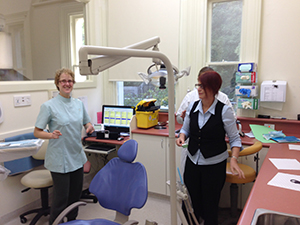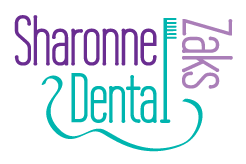frequently asked questions
Q: Why do you spend longer than other dentists at the exam?
A: This extra time and effort allows a completely different level of service and care to be offered. I choose to go through a detailed checklist including screening for oral cancer, sleep apnoea, grinding and clenching, dry mouth and much more. I dry each tooth surface carefully looking for a wide range of things like cracks, wear, decay, soft enamel etc and examine the bite which is critical for success. I enjoy getting to know you and what is important to you, your expectations and treatment goals and document it all in detail. It is much more comprehensive and satisfying this way!
Q: What about the safety of amalgam fillings?
A: Amalgam (mixture of tin, sliver, copper and mercury) has been used successfully for the last 150 years and has been studied very extensively. There is no scientific evidence that the mercury is responsible for any ill health effects and this has been confirmed by bodies around the world such as the NHMRC, FDA and ADA. Mercury is a poison however there is more of it in one meal of fish than from an amalgam filling over a lifetime. The most dangerous form of mercury is the vapour state and in the filling it’s in a different solid form. It is still the longest lasting direct filling material. If you prefer to use other materials I fully respect this and there are other options, each with their own pros and cons. I use all of the available filling materials depending on the individual situation. Before proceeding we discuss the options and of course the final decision is always yours.
Here is the link to the ADA (governs dentists in Australia) statement on amalgam.
http://www.ada.org.au/faqs/faq,documentid,26676,category,Amalgam_Fillings.aspx
Q: Why do I need X Rays; are they risky?
A: All treatments are a benefit/risk weigh up and there are risks of taking and not taking x rays. They allow us to see in between teeth (most common site for decay) and underneath fillings (impossible otherwise), look for pathology in the jaw bone (eg abcess under a dead tooth) and assess bone loss, for example from the gum disease Periodontitis. All of this information is vital to preserving the teeth and health. The dose of radiation for dental x rays extremely low; eg it is around 1/100th of the amount necessary for a hand/wrist x ray. It is now so low that it is no longer considered essential to wear a lead apron. X rays are only taken when absolutely necessary and when they are required the benefits far outweigh the tiny risk. For more information see the website of our governing body in this area ARPANSA at:
http://www.arpansa.gov.au/publications/codes/rps10.cfm
Q: Are you expensive?
A: High quality dentistry involves taking the time and meticulous attention to detail. If things are done properly initially they generally last a lot longer and thus represent much better value for money in the long run. I don’t believe in cheap dentistry as it generally doesn’t last well. Cheap dentistry often fails to comprehensively address problems at their cause so they keep recurring. On the other hand I am not comfortable charging exorbitant fees. The fees are generally at or under the average charged in Victoria, lower than other practices and are reasonable for what is being done and the time taken.
Q: When should my child first visit the dentist?
A: Ideally the first visit should be accompanying and observing another person in the chair eg a sibling, who acts as a model. This allows a level of familiarity and comfort with the staff, surgery and processes before it is their turn. I like giving rides in the chair and show and tell sessions are great. The general rule is six months after eruption of the first tooth, which is usually around 12 months of age. Starting at this age is the best way to prevent problems such as tooth decay, allows parents to learn how to clean their child’s teeth effectively and identify any other needs straight away.
Q: Why does the time required to clean my teeth and the cost vary so much?
A: The severity of gum disease and amount of plaque present varies widely between different people. A small number of people need only 10 minutes of cleaning every 6 months. They have excellent home care and collect little hard plaque (calculus). Most people with reasonable oral hygiene need a 30-45 minute routine clean every 6 months.
At the other end of the spectrum people with the severe deep gum disease Periodontitis have a thick coating of deep plaque covering the tooth roots as well as above the gum. This often requires a series of hour long sessions, (under local anaesthetic if required) to retrieve all the plaque from deep under the gum. This is the only way to stop the disease from progressing and remove the risk of tooth loss.
Everyone is unique and falls somewhere in between these extremes with their situation. The same person can also be different between different cleans depending on how well they have maintained things in between with brushing and flossing. The time and complexity of the work required is thus hugely variable and the cost reflects this spectrum. It is critical to remove all of the plaque for the gum infection to resolve and health to return.
At all sessions the home care routine is discussed and initially demonstrated in great detail. The more the tooth surfaces are kept clean at home the less time is required in the surgery. The aim is to get down to a minimal maintenance program and keep the ongoing cost as low as possible. I will discuss the estimate for your mouth before starting and can give you a written plan with item numbers to plan rebates if that is helpful.

At all sessions the home care routine is discussed and initially demonstrated in great detail
